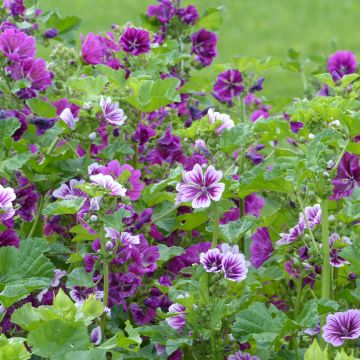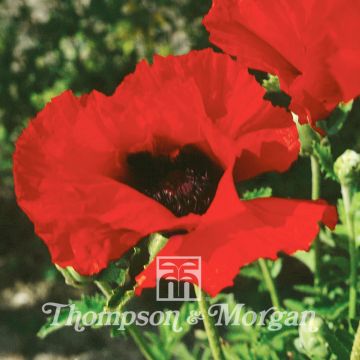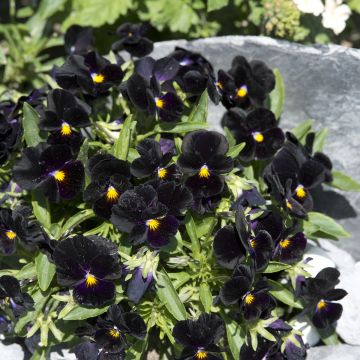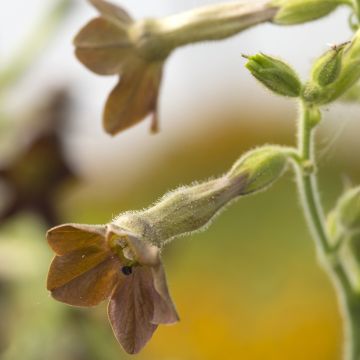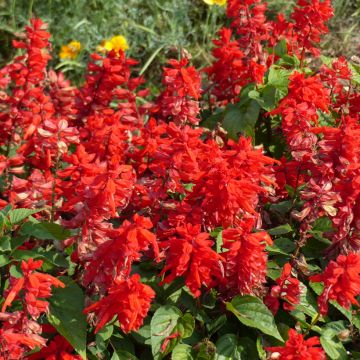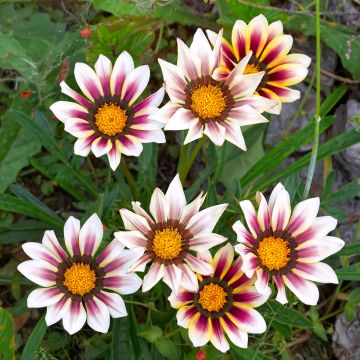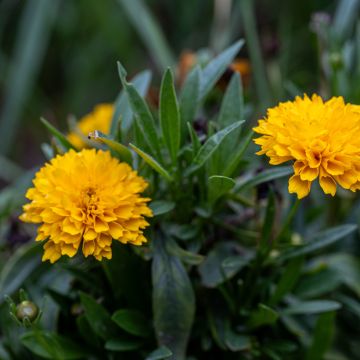Shipping country and language
Your country of residence may be:
Your country of residence is:
For a better user experience on our website, you can select:
Your shipping country:
-
Andorra
-
Austria
-
Belgium
-
Bulgaria
-
Canada
-
Chile
-
Croatia
-
Cyprus
-
Czechia
-
Denmark
-
Estonia
-
Finland
-
France
-
Germany
-
Greece
-
Hungary
-
Iceland
-
Ireland
-
Italy
-
Latvia
-
Lithuania
-
Luxembourg
-
Malta
-
Monaco
-
Netherlands
-
Poland
-
Portugal
-
Romania
-
Slovakia
-
Slovenia
-
Spain
-
Sweden
-
Switzerland
-
United Kingdom
We only deliver seed and bulb products to your country. If you add other products to your basket, they cannot be shipped.
Language:
-
French
-
German
-
Spanish
-
English
-
Italian
My Account
Hello
My wish lists
Log in / Register
Existing customer?
New customer?
Create an account to track your orders, access our customer service and, if you wish, make the most of our upcoming offers.
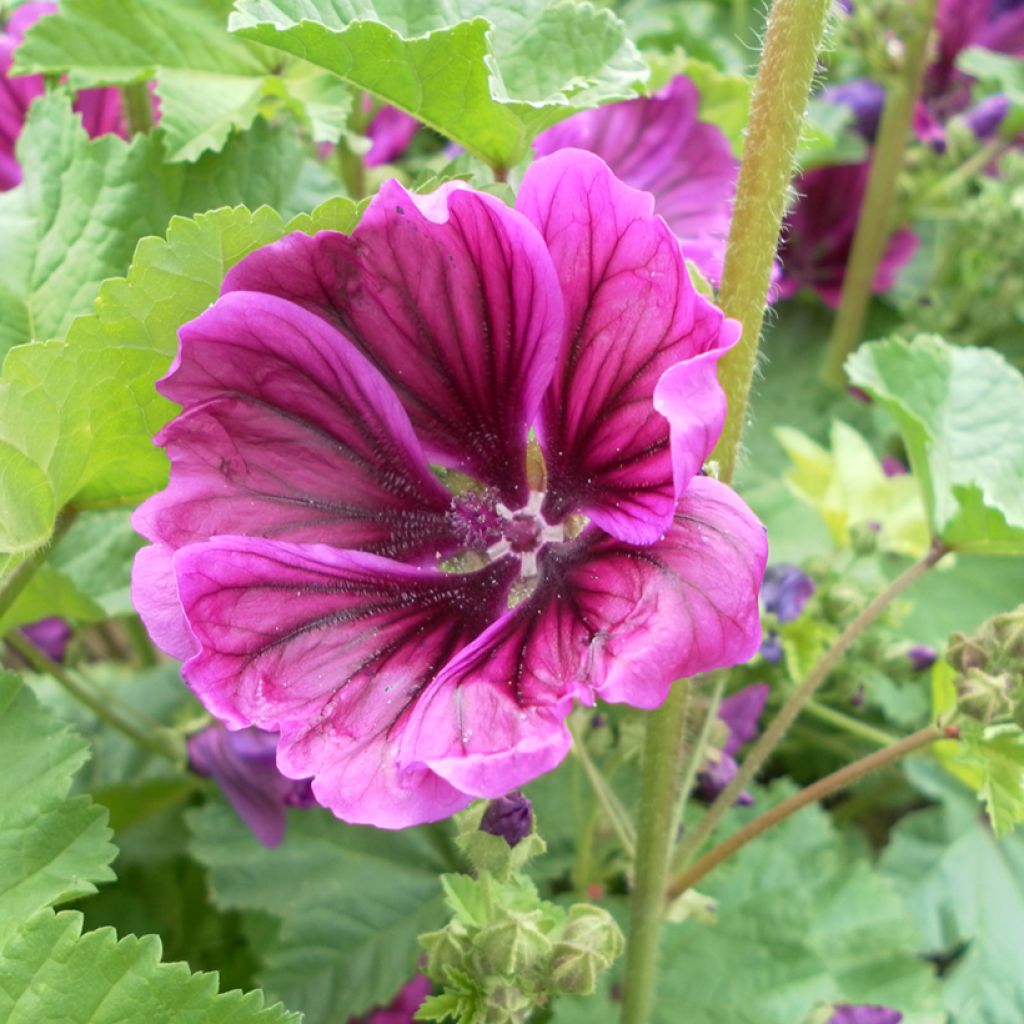

Malva sylvestris var. mauritiana Seeds - French mallow
Malva sylvestris var. mauritiana Seeds - French mallow
Malva sylvestris var. mauritiana Mauritiana
Mauritian mallow, High mallow, Tall mallow, French mallow
Order in the next for dispatch today!
Dispatch by letter from €3.90.
Delivery charge from €5.90 Oversize package delivery charge from €6.90.
More information
This item is not available in your country.
Schedule delivery date,
and select date in basket
This plant carries a 6 months recovery warranty
More information
We guarantee the quality of our plants for a full growing cycle, and will replace at our expense any plant that fails to recover under normal climatic and planting conditions.
Seed-only orders are dispatched by sealed envelope. The delivery charge for seed-only orders is €3.90.
Does this plant fit my garden?
Set up your Plantfit profile →
Description
Malva sylvestris var. mauritiana is a Mediterranean subspecies of the Common Mallow or High Mallow that grows in woods. It is more biennial than perennial, developing sturdy stems adorned with large dark purple-pink flowers. Easy to cultivate in partial shade or non-scorching sun, this mallow offers a magnificent display throughout the summer, even in the first year of cultivation. It is frost-resistant, tolerates almost all types of soil, and withstands summer drought. A good bedding plant, sometimes grown for its nutritional or medicinal qualities.
Malva sylvestris var. mauritiana is a medicinal plant native to fallow lands and sunny undergrowth in the Mediterranean region. It belongs to the mallow family, like the marshmallow (Althea officinalis) used by our pharmacists. More decorative than the native Malva sylvestris, it has larger flowers. It has given rise to several cultivars such as 'Bibor Felho', 'Moravia', or 'Organic'.
The Mauritanian mallow is an upright plant with spreading stems, measuring between 60 cm and 1.20 m in height when in flower and occupying 60 cm of ground space. Its growth depends on the soil it is planted in. In spring, it first forms a well-rounded rosette composed of large heart-shaped to rounded, slightly lobed, crenate leaves, measuring up to 15 cm in diameter, in a beautiful, rich dark green colour. Branched and leafy stems develop later, forming a fairly loose branching structure. Flowering occurs from June to September depending on the sowing date. The flowers are grouped in well-distributed clusters in the axils of the leaves on sturdy stems. Their 5-petaled corollas measure between 3 and 5 cm in diameter. Overall, their colour is a dark pink-purple that leans more towards bluish than those of the classic sylvestris form. They are also more subtly veined. This flowering is nectar-rich. After pollination, small wheel-shaped fruits form, containing 11 or 12 large seeds.
The Mauritanian mallow is ideal in natural areas, on large slopes, or in cottage gardens alongside lavateras, mulleins (Verbascum), or tall thistles.
It is also an edible plant. Its young leaves are consumed as a vegetable in Morocco, just like spinach, prepared with lemon juice. It is a delicious dish and useful for promoting intestinal transit. This plant is also known for its soothing properties on burns and digestive disorders. In Mediterranean cuisine, it is also used raw in salads. Nowadays, it is used in the preparation of soothing balms. Caution, leaves stained with rust are unfit for consumption.
Report an error about the product description
Flowering
Foliage
Plant habit
Botanical data
Malva
sylvestris var. mauritiana
Mauritiana
Malvaceae
Mauritian mallow, High mallow, Tall mallow, French mallow
Malva sylvestris var. incanescens, Malva sylvestris var. mauritiana, Malva mauritiana
Mediterranean
Other Graines de Mauves
Planting and care
Sow the seeds of Malva mauritiana from late winter to early spring, deeply in a rich potting soil. Make sure the soil is moist, but not waterlogged, and seal them in a polythene bag until germination, which usually takes 15 to 21 days at 21°C. Transplant when the seedlings are large enough to handle into 8 cm pots. Let them grow on in cooler conditions, then plant them in the ground in moderately fertile soil, in non-scorching sun or partial shade, spaced at least 40 cm apart.
Like all other species in the genus, this mallow can be prone to rust, which is more unsightly than truly harmful to the plant. However, rust-infected leaves are unfit for consumption. It is moist conditions that promote the disease. Similar to lavateras, this mallow is less perennial, but it self-seeds easily. It is best to prune it short every spring, as you would with the latter. If you grow this plant in soil that is too rich in organic matter, it may tend to lay its stems down and support may be necessary.
Sowing period
Intended location
This item has not been reviewed yet - be the first to leave a review about it.
Flower seeds
Haven't found what you were looking for?
Hardiness is the lowest winter temperature a plant can endure without suffering serious damage or even dying. However, hardiness is affected by location (a sheltered area, such as a patio), protection (winter cover) and soil type (hardiness is improved by well-drained soil).

Photo Sharing Terms & Conditions
In order to encourage gardeners to interact and share their experiences, Promesse de fleurs offers various media enabling content to be uploaded onto its Site - in particular via the ‘Photo sharing’ module.
The User agrees to refrain from:
- Posting any content that is illegal, prejudicial, insulting, racist, inciteful to hatred, revisionist, contrary to public decency, that infringes on privacy or on the privacy rights of third parties, in particular the publicity rights of persons and goods, intellectual property rights, or the right to privacy.
- Submitting content on behalf of a third party;
- Impersonate the identity of a third party and/or publish any personal information about a third party;
In general, the User undertakes to refrain from any unethical behaviour.
All Content (in particular text, comments, files, images, photos, videos, creative works, etc.), which may be subject to property or intellectual property rights, image or other private rights, shall remain the property of the User, subject to the limited rights granted by the terms of the licence granted by Promesse de fleurs as stated below. Users are at liberty to publish or not to publish such Content on the Site, notably via the ‘Photo Sharing’ facility, and accept that this Content shall be made public and freely accessible, notably on the Internet.
Users further acknowledge, undertake to have ,and guarantee that they hold all necessary rights and permissions to publish such material on the Site, in particular with regard to the legislation in force pertaining to any privacy, property, intellectual property, image, or contractual rights, or rights of any other nature. By publishing such Content on the Site, Users acknowledge accepting full liability as publishers of the Content within the meaning of the law, and grant Promesse de fleurs, free of charge, an inclusive, worldwide licence for the said Content for the entire duration of its publication, including all reproduction, representation, up/downloading, displaying, performing, transmission, and storage rights.
Users also grant permission for their name to be linked to the Content and accept that this link may not always be made available.
By engaging in posting material, Users consent to their Content becoming automatically accessible on the Internet, in particular on other sites and/or blogs and/or web pages of the Promesse de fleurs site, including in particular social pages and the Promesse de fleurs catalogue.
Users may secure the removal of entrusted content free of charge by issuing a simple request via our contact form.
The flowering period indicated on our website applies to countries and regions located in USDA zone 8 (France, the United Kingdom, Ireland, the Netherlands, etc.)
It will vary according to where you live:
- In zones 9 to 10 (Italy, Spain, Greece, etc.), flowering will occur about 2 to 4 weeks earlier.
- In zones 6 to 7 (Germany, Poland, Slovenia, and lower mountainous regions), flowering will be delayed by 2 to 3 weeks.
- In zone 5 (Central Europe, Scandinavia), blooming will be delayed by 3 to 5 weeks.
In temperate climates, pruning of spring-flowering shrubs (forsythia, spireas, etc.) should be done just after flowering.
Pruning of summer-flowering shrubs (Indian Lilac, Perovskia, etc.) can be done in winter or spring.
In cold regions as well as with frost-sensitive plants, avoid pruning too early when severe frosts may still occur.
The planting period indicated on our website applies to countries and regions located in USDA zone 8 (France, United Kingdom, Ireland, Netherlands).
It will vary according to where you live:
- In Mediterranean zones (Marseille, Madrid, Milan, etc.), autumn and winter are the best planting periods.
- In continental zones (Strasbourg, Munich, Vienna, etc.), delay planting by 2 to 3 weeks in spring and bring it forward by 2 to 4 weeks in autumn.
- In mountainous regions (the Alps, Pyrenees, Carpathians, etc.), it is best to plant in late spring (May-June) or late summer (August-September).
The harvesting period indicated on our website applies to countries and regions in USDA zone 8 (France, England, Ireland, the Netherlands).
In colder areas (Scandinavia, Poland, Austria...) fruit and vegetable harvests are likely to be delayed by 3-4 weeks.
In warmer areas (Italy, Spain, Greece, etc.), harvesting will probably take place earlier, depending on weather conditions.
The sowing periods indicated on our website apply to countries and regions within USDA Zone 8 (France, UK, Ireland, Netherlands).
In colder areas (Scandinavia, Poland, Austria...), delay any outdoor sowing by 3-4 weeks, or sow under glass.
In warmer climes (Italy, Spain, Greece, etc.), bring outdoor sowing forward by a few weeks.
